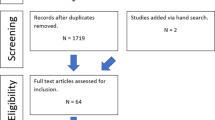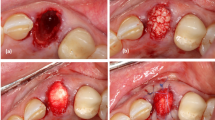Abstract
The purpose of this feasibility study was to evaluate two novel techniques facilitating bone cement repair of ossicular discontinuity between the incus and stapes. An isolated damage of the long incus process can be repaired using bone cement. However, bridging of a large gap between incus remnant and stapes head with bone cement is difficult, since viscous cement is not stable and the wet cement bridge may collapse. Ten fresh-frozen cadaveric human temporal bones were used. The long process of the incus was subtotally resected. A novel instrument and polylactide acid (PLA) scaffolds were applied to support ossicular reconstruction with bone cement. Stability of cement bridging was tested by checking for a round window reflex or motion of the stapes by palpating the malleus handle. Both the instrument as well as the PLA scaffolds were relatively easy to insert into the middle ear. However, bone cement adhered to the instrument irrespective of cement viscosity and contact time of the instrument with the ossicles. The bone cement plug had to be detached and sculptured. By contrast, PLA scaffolds could be used in a standardized manner and generated stable cement reconstructions. Curved PLA scaffolds were superior to straight ones. Initial results in cadaveric human temporal bones suggest that implantable PLA scaffolds might be suitable to support bone cement repair, even in very large defects of the long incus process.




Similar content being viewed by others
References
Maassen MM, Zenner HP (1998) Tympanoplasty type II with ionomeric cement and titanium–gold-angle prostheses. Am J Otol 19:693–699
Hüttenbrink KB, Luers JC, Beutner D (2009) Titanium angular clip: a new prosthesis for reconstruction of the long process of the incus. Otol Neurotol 30:1186–1190
Kwok P, Fisch U, Gleich O, Achhammer K, Strutz J (2006) Stapes surgery: the diameter of the long process of the incus. Otol Neurotol 27:469–477
àWengen DF, Nishihara S, Kurokawa H, Goode RL (1995) Measurements of the stapes superstructure. Ann Otol Rhinol Laryngol 104:311–316
Kjeldsen AD, Grøntved AM (2000) Tympanoplasty with ionomeric cement. Acta Otolaryngol Suppl 543:130–131
Ozer E, Bayazit YA, Kanlikama M, Mumbuc S, Ozen Z (2002) Incudostapedial rebridging ossiculoplasty with bone cement. Otol Neurotol 23:643–646
Babu S, Seidman MD (2004) Ossicular reconstruction using bone cement. Otol Neurotol 25:98–101
Goebel JA, Jacob A (2005) Use of Mimix hydroxyapatite bone cement for difficult ossicular reconstruction. Otolaryngol Head Neck Surg 132:727–734
Elsheikh MN, Elsherief H, Elsherief S (2006) Physiologic restablishment of ossicular continuity during excision of retraction pockets. Arch Otolaryngol Head Neck Surg 132:196–199
Baglam T, Karatas E, Durucu C, Kilic A, Ozer E, Mumbuc S, Kanlikamaet M (2009) Incudostapedial rebridging ossiculoplasty with bone cement. Otolaryngol Head Neck Surg 141:243–246
Lübben B, Geyer G (2001) Experimental analysis concerning the toxicity of ionomeric cement. Laryngo-Rhino-Otol 80:214–222
Goycoolea MV, Muchow DC (1994) Sustained release of antimicrobials in the middle ear using a biodegradable support. Ann Otol Rhinol Laryngol Suppl 163:46–48
Peltonen LI, Jero J, Sukura A, Pietola L, Konttinen YT, Aarnisalo AA (2007) Biocompatibility of polylactides in the middle ear: an experimental animal study. Otol Neurotol 28:850–853
Peltoniemi H, Ashammakhi N, Kontio R, Waris T, Salo A, Lindqvist C, Grätz K, Suuronen R (2002) The use of bioabsorbable osteofixation devices in craniomaxillofacial surgery. Oral Surg Oral Med Oral Pathol Oral Radiol Endod 94:5–14
Kontakis GM, Pagkalos JE, Tosounidis TI, Melissas J, Katonis P (2007) Bioabsorbable materials in orthopaedics. Acta Orthop Belg 73:159–169
Grizzi I, Garreau H, Li S, Vert M (1995) Hydrolytic degradation of devices based on poly(dl-lactic acid) size-dependence. Biomaterials 16:305–311
Tsuji H (2005) Poly(lactide) Stereocomplexes: formation, structure, properties, degradation, and applications. Macromol Biosci 14:569–597
Arosarena OA, Falk A, Malmgren L, Bookman L, Allen MJ, Schoonmaker J, Tatum S, Kellman R (2003) Defect repair in the rat mandible with bone morphogenic proteins and marrow cells. Arch Facial Plast Surg 5:103–108
Acknowledgments
The authors gratefully acknowledge the outstanding technical assistance of Joachim Lehmann and Bodo Kuhr (Department of Precision Mechanics, University of Greifswald) and Edith Schindler (Institute of Pharmacy, University of Regensburg).
Conflict of interest
The authors declare that they have no conflict of interest.
Author information
Authors and Affiliations
Corresponding author
Rights and permissions
About this article
Cite this article
Kaftan, H., Göpferich, A., Kaftan, S. et al. Two different techniques to facilitate reconstruction of the long incus process with bone cement: a feasibility study in human cadaveric temporal bones. Eur Arch Otorhinolaryngol 269, 1431–1435 (2012). https://doi.org/10.1007/s00405-011-1782-9
Received:
Accepted:
Published:
Issue Date:
DOI: https://doi.org/10.1007/s00405-011-1782-9




